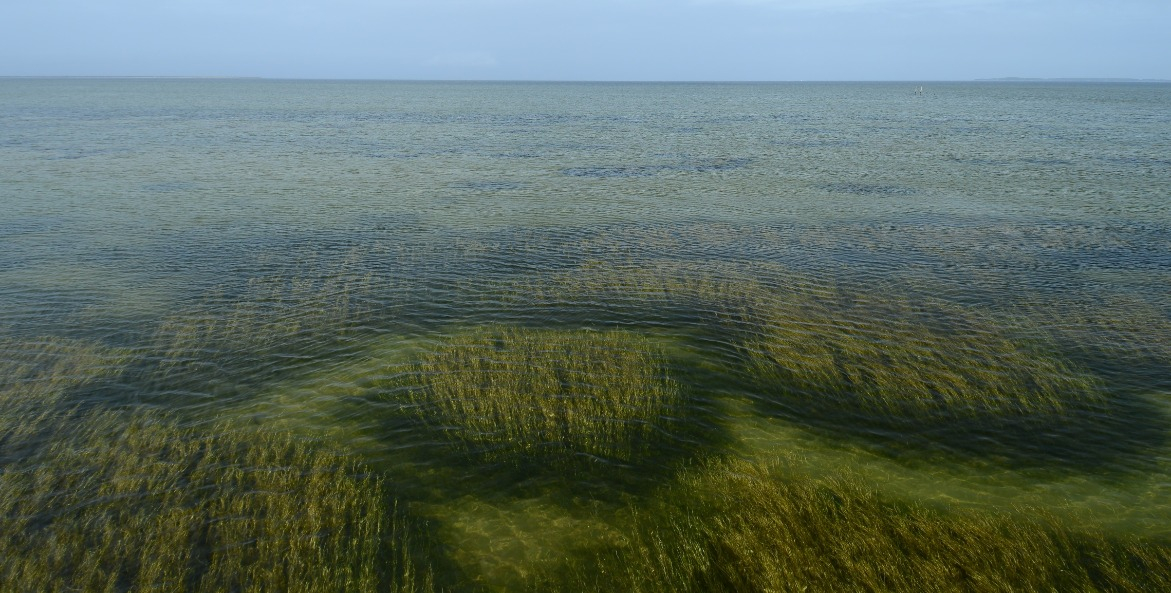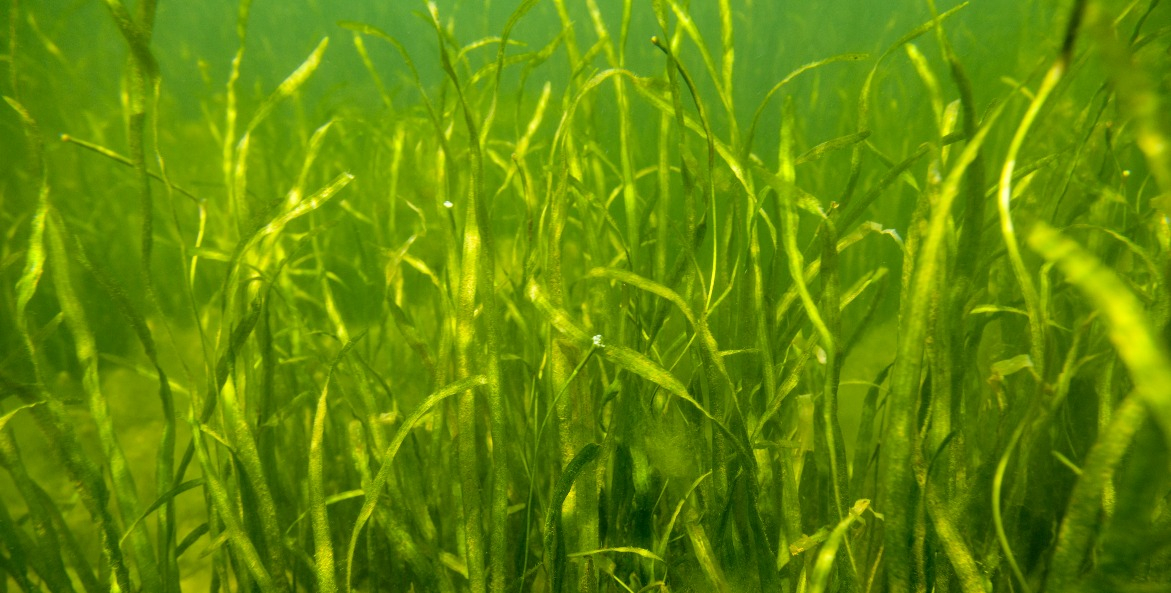What are underwater grasses and why are they important for the Bay?
There are more than a dozen types of underwater grasses that grow in the Chesapeake Bay and its rivers, typically in shallow water. They're an extremely important habitat because they provide shelter and food for juvenile fish, crabs, migrating water birds, and other species of wildlife. The crab population, especially juvenile crabs, are dependent on habitat provided by grass beds.
Underwater grasses also protect shorelines from erosion, improve water clarity, and can help reduce the effects of climate change. For example, researchers demonstrated that underwater grasses help diminish the acidification of the Bay caused in part by the burning of fossil fuels, which threatens the health of fish and shellfish. The study showed that Bay grasses can act as a 'Tums' to help alleviate acidification.
What does the latest survey tell us about the state of grasses in the Bay?
In late July, the Chesapeake Bay Program released its latest assessment of the extent of underwater grasses in the Bay, based on surveys completed in 2021. It found 67,470 acres of grasses growing, a nine percent increase from 2020. The small gain was largely due to an increase in widgeon grass, a species that fluctuates with weather and water quality, so is not a reliable indicator of the long-term health of Bay grasses. Overall, the numbers are still below the long-term average, and represent just 37 percent of the restoration target of 185,000 acres. Nonetheless, the survey did find bright spots; grass abundance increased in the Susquehanna Flats region at the north end of the Bay, and in Virginia acreage improved in the Corrotoman and Rappahannock Rivers, as well as Mobjack Bay.

Lush, late summer submerged aquatic vegetation beds off Poplar Island in the Chesapeake Bay.
Peter McGowan
How are grasses doing over the long term, and how does this year's survey fit into that trend?
This year represents a slight rebound in grasses after last year, and long-term grasses are generally doing better than they were in the mid-1980s, when monitoring began. But this year's acreage is a 38 percent decline from 2018. Researchers that year reported the highest acreage (an estimated 108,078 acres) in the survey's history. The fact is grasses continue to face headwinds from pollution coming from agriculture and development—as well as from climate change—problems that often build on each other and make sustained progress difficult. For example, the steep decline in grasses we saw between 2018 and 2019 was in part attributed to record-breaking river flows. These types of extreme events, which are more and more likely with climate change, wash more pollution into the water that can smother underwater grasses. Eel grass, an important underwater grass species in the Bay, is also sensitive to warming water temperatures, which can lead to die-offs.
What does low grass acreage mean for the health of the Bay?
It's hard to overstate how essential underwater grasses are to the health of juvenile crabs, fish, and other aquatic life. This year we saw a concerning decline in the population of blue crabs overall, and the third consecutive year of below-average recruitment (survival to adulthood) of juvenile crabs. Scientists are still working to figure out why, but as the Chesapeake Bay Program noted in its release of the grasses survey, "Researchers that study underwater grasses believe that the increase or decline of the juvenile blue crab population is in direct correlation to the increase and decrease of grass beds."
How can we help underwater grasses rebound?
Reduce pollution. That's the key to restoring underwater grasses and other critical habitats in the Bay. Many of the strategies called for in the Bay's science-based clean-up plan—the Chesapeake Clean Water Blueprint—have dual benefits for reducing pollution to local waters while also reducing greenhouse gas emissions that contribute to climate change, both of which are needed to help Bay grasses. For example, planting trees along streams provides a buffer that naturally filters and reduces the amount of pollution reaching the stream, and also provides habitat and stores carbon. But if we're going to achieve the Blueprint's targets, the states need to accelerate their efforts to reduce pollution now, and the U.S. Environmental Protection Agency needs to hold them accountable to their commitments.


Issues in this Post
About the Bay Bay Grasses Blue Crabs Chesapeake Clean Water Blueprint Climate Change Living Shorelines Trees



